- Sep 10, 2025
- 207
- 253
Someone on Reddit made a post asking what tools they should use to help with their dogs reactivity. I shared my thoughts and figured it may make some interesting conversation over here as well. Agree? Disagree? Thoughts, feelings or ideas? 
Here's my response:
Tools won't fix your reactivity issue by themselves. Tools are used in the training, but not as an answer to a problem. When tools are used without a context that the dog understands, they tend to exasperate the problem, not solve it.
A good reactivity rehab program involves:
- Management.
- Outlet.
- Training.
- Progressive Exposure.
- Communication & Consequences (positive & negative).
- Maintenance.
Be clear with your trainer on exactly what you're looking for. Ask them to lay out their plan to get you to your goal. If you're not happy with the answers then this trainer might not be the right fit for your dog.
Management: The dog is handled in a manner where he can't practice the bad behavior outside of training for several weeks or several months, depending on how habitual the problem is.
Outlet: The dog is given an outlet for that behavior in a constructive manner. Possession games, chase & catch, bite sports, barking, etc.
Training: The dog is taught a redirection queue, a focus queue, an out command, some basic obedience, markers which includes a conditioned punisher.
Exposure: Once the tools are in place the dog is exposed to the trigger and shown what is expected using the skills it's been taught up to this point.
Communication: The dog needs feedback once it's in those challenging situations. Effective communication can't happen until the skills and markers are in place.
Maintenance: Depending on the dog and his level of rehabilitation, there will be a level of maintenance that might be required to keep the bad behavior away for good.
Others might disagree but this is how I would be looking at the situation.
Good luck!
Here's my response:
Tools won't fix your reactivity issue by themselves. Tools are used in the training, but not as an answer to a problem. When tools are used without a context that the dog understands, they tend to exasperate the problem, not solve it.
A good reactivity rehab program involves:
- Management.
- Outlet.
- Training.
- Progressive Exposure.
- Communication & Consequences (positive & negative).
- Maintenance.
Be clear with your trainer on exactly what you're looking for. Ask them to lay out their plan to get you to your goal. If you're not happy with the answers then this trainer might not be the right fit for your dog.
Management: The dog is handled in a manner where he can't practice the bad behavior outside of training for several weeks or several months, depending on how habitual the problem is.
Outlet: The dog is given an outlet for that behavior in a constructive manner. Possession games, chase & catch, bite sports, barking, etc.
Training: The dog is taught a redirection queue, a focus queue, an out command, some basic obedience, markers which includes a conditioned punisher.
Exposure: Once the tools are in place the dog is exposed to the trigger and shown what is expected using the skills it's been taught up to this point.
Communication: The dog needs feedback once it's in those challenging situations. Effective communication can't happen until the skills and markers are in place.
Maintenance: Depending on the dog and his level of rehabilitation, there will be a level of maintenance that might be required to keep the bad behavior away for good.
Others might disagree but this is how I would be looking at the situation.
Good luck!
